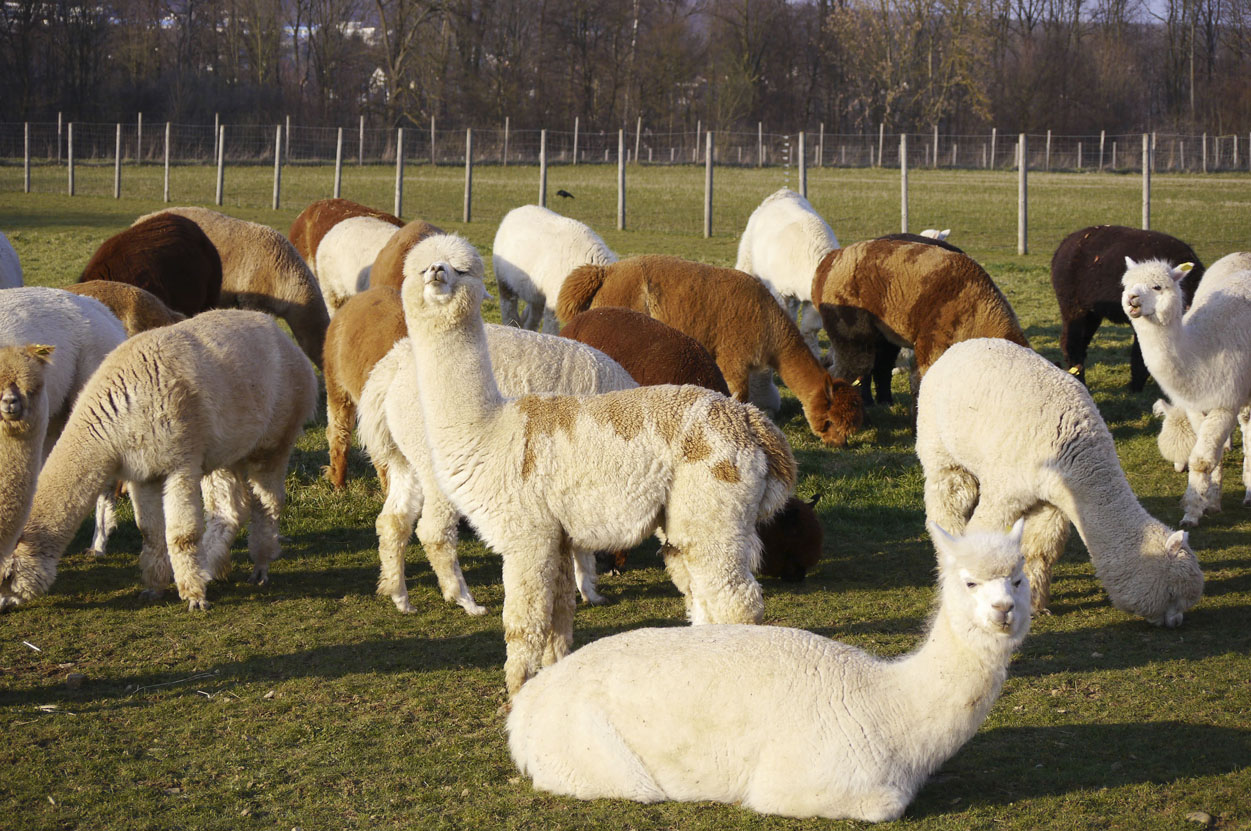
Camelid Services
Whether you’re maintaining llama or alpaca, have a commercial industry or a personal herd, knowing about your animals’ wellness is key to raising them in a healthy, happy manner. Creston Large Animal has the knowledge and equipment to help you maintain your herd’s health and to be more productive.
Herd Health & Analysis
The goal of health management programs is to ensure the optimal care and well-being of camelid and to reduce losses in productivity caused by disease and management errors. The health management program is generally developed cooperatively by the herd veterinarian and the dairy producer based on comparisons of herd performance with predetermined performance goals. The structure of health management programs is unique to each farm but is typically keyed to the scheduled veterinary herd visits that combine routine reproductive examinations, review of selected herd performance records, and decisions related to specific herd management issues.
Routine Immunization Protocols
Having a proper vaccination schedule is crucial to camelid health. Your heard will be much more profitable and doctoring of livestock will be greatly lowered with proper immunization. If your animals are exposed to anything, you should vaccinate to protect your herd.
Strategic Deworming & Fecal Egg Count
Many producers rely on fecal egg count reduction tests (FECRTs) to determine which parasites are affecting their herds or whether they might have resistant parasites on their property.
The proper hoof care on these animals is very important for the health and comfort they experience every day. The procedure depends on how gentle your camelid is; they have very sharp hooves and can injure the person trimming their feet. Creston Large Animal can assist you in the ease of foot control so your animals are comfortable.
This is a common procedure that should be decided at a fairly young age. The younger the bull, the less severe the procedure is. You can use an elastrator if the testicles are small enough; if they are too big they can be surgically removed.
Certificates of Veterinary Inspection
This plays a big role in preventing the spread of animal diseases across state lines. State agencies have created rules and regulations that govern the importation of livestock and other animals. This helps keep animals healthy and reduces the prevalence of new diseases in new areas. Creston Large Animal can help you with CVI to insure healthy transport.
Breeding Management and Reproduction
Camelid producers should seriously consider getting a breeding soundness exam (BSE). The examination is conducted on bulls prior to the breeding season to assess their reliability and capability as breeding animals. The cost of the test will vary, but it is usually under $50 and is arguably the best money livestock producers will spend on an annual basis to protect their heard. We sometimes try to save money by not spending it, but conducting a BSE is a prime example of how to save money in the long run by spending a little up front.
Semen Evaluation (Please review content terminology specific to Camelids)
The fertility of a male is influenced by a number of things. If you're planning on using your stud consistently, it may be a good idea to get a semen evaluation done so you know how fertile he is (how effective he is at getting females pregnant). This can make your operation very profitable or a losing battle. If you’re tending to an entire herd but only get a few offspring a year due to a sire's low sperm count, the cause of your herd not being profitable could have been forseen with a semen evaluation. Something so simple can make a huge difference.
Frozen semen is a good option for breeding llamas. It is collected and then packaged in straws labeled with the male's name. After straws are harvested, they are put in what is called a semen tank. This tank is full of nitrogen which keeps the semen frozen and preserved. Straws are handled with straw tweezers, and fingers can be protected from nitrogen burns by wearing thin gloves.
Dystocia (difficult labor) (Please review content terminology specific to Camelids)
Birthing difficulty is often called dystocia. It is the major cause of death loss in breeding operations. Dystocia can have large economic impacts on producers with the possibilities of cria death, veterinary costs, decreased rebreeding efficiency, and injury or death to the female. All this added up makes a huge dent in an operation. Creston Large Animal can help you create a sound management program to lower the risk of dystocia and quickly recognize llama experiencing difficult labor, thus improving animal welfare and farm profitability.
A cesarean is an incision made through the uterus in order to deliver the cria. C-sections are necessary in llama when vaginal delivery is too difficult - such as it can be with dystocia - and when the cria is not progressing in the expected amount of time, therefore endangering the life of itself or the dam. Your vet can do this procedure to protect your investment and for the health of your animals.
what we offer
Bovine
Heard Health and Analysis
- Formulated Vaccination Schedule
- Mastitis & Milk Quality Assessment
- Cosmetic and Electric Dehorning
- DNA Testing
- Castration
- Umbilical Hernia
- Certificates of Veterinary Inspection
- Immunization Protocols
Breeding Management and Reproduction
Small Ruminant
Heard Health and Analysis
- Formulated Vaccination Schedule
- Mastitis & Milk Quality Assessment
- Cosmetic and Electric Dehorning
- DNA Testing
- Castration
- Umbilical Hernia
- Certificates of Veterinary Inspection
- Immunization Protocols
Breeding Management and Reproduction
Camelid
Heard Health and Analysis
- Routine Health Examination
- Routine Immunization Protocols
- Strategic Deworming & Fecal Egg Counts
- Foot Trimming
- Castration
- Certificates of Veterinary Inspection
Breeding Management and Reproduction
Porcine
Heard Health and Analysis
- Vaccinations
- DNA Testing
- Castration
- Umbilical Hernia
- Certificates of Veterinary Inspection
- Immunization Protocols
Breeding Management and Reproduction
